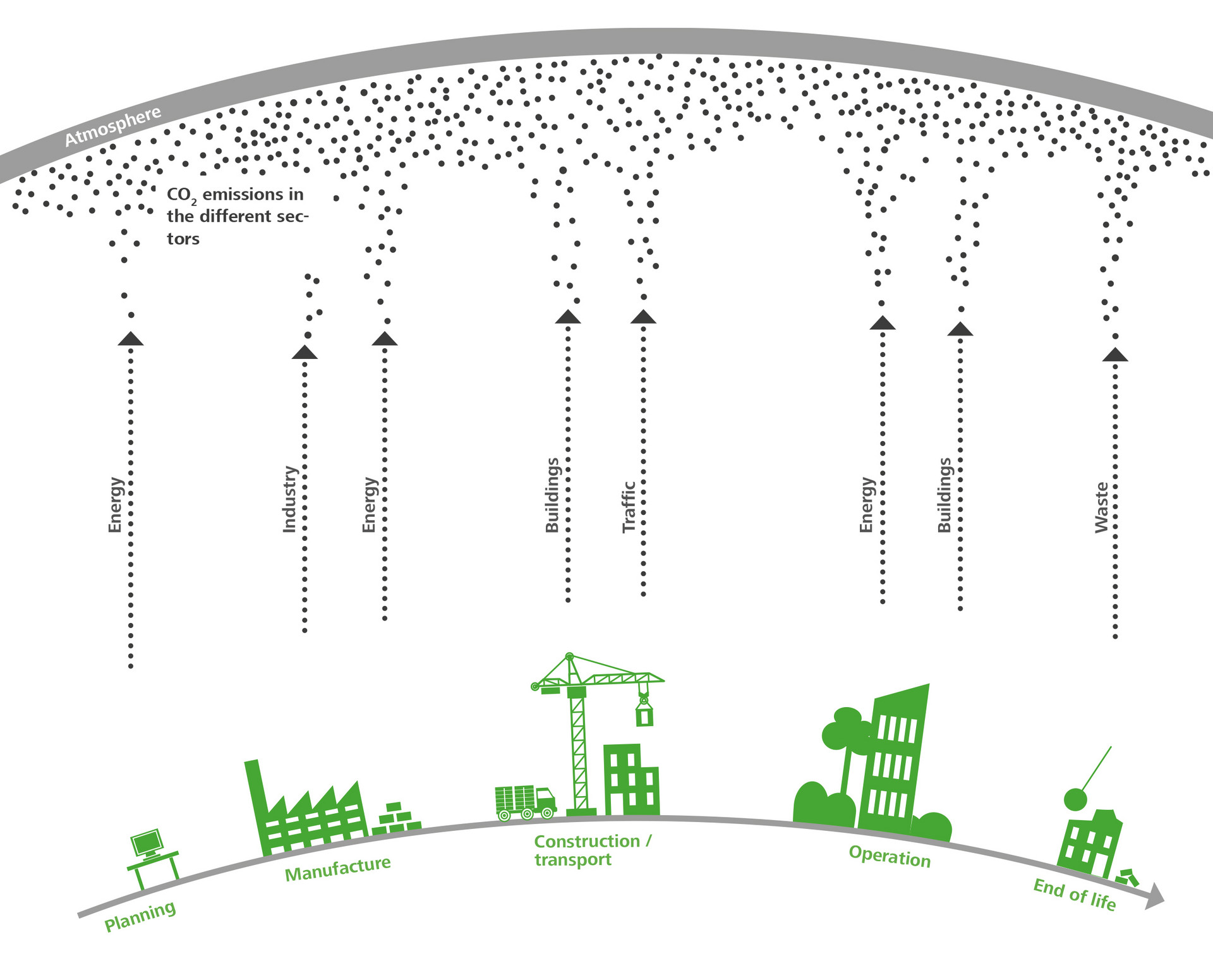In order to exploit the potential of buildings as an elementary contribution to climate action, it is necessary to understand the complexity and interrelationships of the individual sectors involved in the system "building" and to develop scalable solutions based on this.
The greenhouse gas emissions that are directly or indirectly attributable to the building and real estate sector cannot be reduced to one emission source. The most obvious greenhouse gas emissions are due to the use of fossil fuels in the operation of buildings. Heating, cooling, hot water and lighting are usually referred to as "building-related emissions" and are part of the regulation for higher energy quality of new buildings and renovations. Emissions from all other processes in buildings, for example for the production of goods, the transport of people and goods and for the use of information technology, are excluded from this definition, although for the public they are associated with the building or the management of the building.

In addition, the construction of our built environment produces greenhouse gas emissions:
- during the necessary production
- the transport of building products and materials,
- maintenance during operation, and
- for deconstruction and disposal at the end of life.
The commonly used sector allocation attributes these emissions to the following sectors respectively:
- Energy
- Industry
- Buildings
- Transport
- Waste management
If the perspective is only related to the individual sectors, optimisation potentials remain unused or topics are discussed and addressed that lie outside the respective area of responsibility of the persons involved. An integrated, stakeholder-based, honest view of the respective responsibilities is necessary to implement a fast and effective avoidance of greenhouse gas emissions associated with the construction, operation and management of real estate assets.
Further information can be found in our brochure "Climate Positive: Now!
